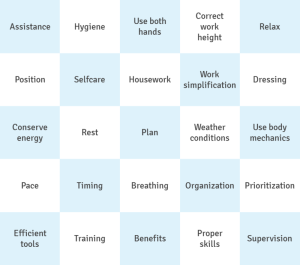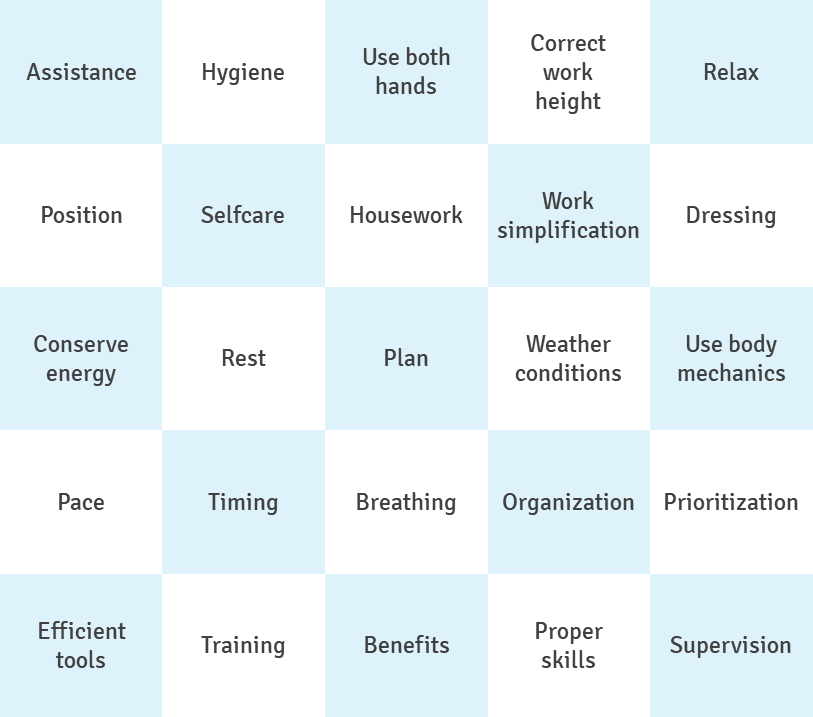Job simplification
| Job simplification |
|---|
| See also |
Job simplification (or in other words job engineering) aims to increase work efficiency by reducing the complexity and range of tasks that one person has to do. The said conception is based on principles that are drawn from scientific management and industrial engineering. According to this approach, tasks are designed to be very easy, repetitive and standardized. That is why the employee has definitely more time to concentrate on completing the assigned task (R. L. Daft, D. Marcic 2010, p. 419).
The purpose of job simplification is to maximize output and minimize labour input all at once. Consequently, it sometimes requires the implementation of necessary technology in order to achieve expected results (J. Martin 2005, p. 531).
Division of tasks

Fig.1. Set of tools that will improve work efficiency
In this approach, employees complete tasks according to the following scheme:
- task 1 ---> employee A,
- task 2 ---> employee B,
- task 3 ---> employee C,
- task 4 ---> employee D,
- task 5 ---> employee E,
- and so on (R. L. Daft, D. Marcic 2010, p. 419).
Advantages of job simplification
The main advantage of job simplification involves increased operating efficiency. This growth is possible to achieve because simplified jobs are connected with specialization that, in turn, helps to increase productivity. Another advantage is that low-skilled employees require little training to complete assigned tasks and that is why they can be transferred from one job to another. What is more, it is also beneficial for the company's management that can supervise easily the productivity of these simplified jobs. Other potential advantages may include low-cost labour and controlled production quantity (P. Chelladurai 2006, p. 139).
Disadvantages of job simplification
The biggest disadvantage of this approach is that job simplification may cause the job to become more monotonous and boring. This, in turn, can lead to a number of negative employees' reactions, including sabotage, absenteeism, and unionization. Consequently, even when workers attend work, they may not put their best efforts to perform tasks and they also may be prone to making more mistakes. The other disadvantages can be loss of efficiency due to low-quality work and as well the necessity to pay high wages to get employees to do unattractive and repetitive jobs (P. Chelladurai 2006, p. 139).
Where job simplification can be used?
This approach is characteristic of production and assembly line jobs. Nevertheless, it can also be seen in administrative or educational jobs. For instance, in accounting departments, employees' duty is to do specified activities, such as opening the post, sorting the invoices or entering the data into a computer system (J. Martin 2005, pp. 531-532).
Examples of Job simplification
- Task Standardization: Task standardization is an important component of job simplification. This involves breaking tasks down into smaller, more manageable components and assigning them to individual employees. This simplifies the job by reducing the number of steps and decisions that need to be taken in order to complete a task. By standardizing tasks, employees can become more proficient at completing their assigned tasks and work can be completed in a more efficient manner.
- Automation: Automation is another way to simplify complex jobs. Automation is the process of using technology to complete tasks that would otherwise be completed manually. This can reduce the amount of time and effort needed to complete a task, as well as minimize the risk of human error. Automation also increases accuracy and consistency, as the same task will be completed the same way every time.
- Job Rotation: Job rotation is another way to simplify complex jobs. This involves switching employees between different tasks or departments to give them a more varied experience and a better understanding of the entire organization. This can help to reduce boredom, increase motivation, and provide employees with the opportunity to develop new skills.
- Process Mapping: Process mapping is a tool used to identify and document the steps involved in a particular process. This can be used to identify any areas that could be simplified or streamlined, as well as to identify any tasks that could be automated. Process mapping can help to ensure that tasks are completed quickly and efficiently, and that the process is as simple and straightforward as possible.
- Job Enrichment: Job enrichment is a management approach that attempts to increase job satisfaction and employee motivation by giving employees more control and autonomy over their work. It involves giving employees the opportunity to take on more challenging tasks and to take ownership of their work by giving them more control over the tasks they perform.
- Task Assignment: Task assignment is a way of organizing work in which tasks are given to specific individuals or teams. This approach allows for more accountability and allows teams to take ownership of their work. It also encourages collaboration and allows employees to develop their own ideas and solutions to problems.
- Process Re-Engineering: Process re-engineering is a process of redesigning business processes to make them more efficient and effective. This approach involves analyzing existing processes and identifying areas that can be improved, streamlined, or eliminated altogether.
In conclusion, job simplification is an approach to increase work efficiency by reducing the complexity and range of tasks that one person has to do. Other approaches related to job simplification include job enrichment, task assignment, and process re-engineering. All of these approaches are designed to increase job satisfaction, employee motivation, and efficiency.
References
- Chelladurai P. (2006), Human Resource Management in Sport and Recreation, Human Kinetics, Champaign, pp. 138-139
- Daft R. L. (2008), New Era of Management, Thomson Learning, Mason, p. 640
- Daft R. L., Marcic D. (2010), Understanding Management, South-Western Cengage Learning, Mason, p. 419
- Dysvik A., Kuvaas B. (2011), Intrinsic motivation as a moderator on the relationship between perceived job autonomy and work performance, "European Journal of Work and Organizational Psychology", vol. 20, no. 3
- French R., Rayner C., Rees G., Rumbles S. (2011), Organizational Behaviour, John Wiley & Sons, New York, pp. 244-245
- Martin J. (2005), Organizational Behaviour and Management, Thomson Learning, Mason, pp. 531-532
Author: Klaudia Nycz

